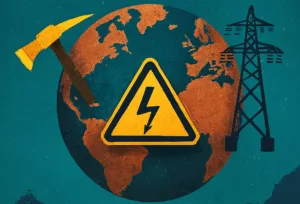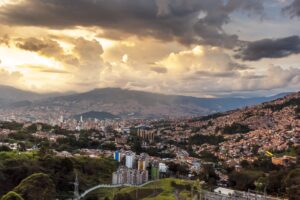The first time I heard about energy communities was just over a year ago, and I must admit the concept immediately caught my attention—mainly because of the variety of meanings it could hold. After consulting different sources, I realized that there isn’t a single, consistent definition of what an energy community actually is—or should be.
On the European Commission’s website, for example, you’ll find that they describe energy communities as citizen-driven energy initiatives that contribute to the transition toward cleaner energy and improve energy efficiency in local communities. It’s an interesting definition, but I still felt it lacked the tangible clarity I was searching for.
As fate would have it, while I was trying to understand how an energy community could actually take shape, I received an invitation to attend the presentation of a promising project called Terra Initiative, developed in partnership with the Arhuaco people in the Sierra Nevada de Santa Marta.
Terra Initiative is a solar energy generation project—unique in Latin America, and I would even say, in the world, given its characteristics. It’s a business model involving an Indigenous community that also seeks to protect the biodiversity of a vulnerable and irreplaceable ecosystem like the Sierra Nevada.
This isn’t a social investment project—it’s a disruptive business model that sets a precedent for how the private sector can partner with diverse actors to co-create value using private capital. And thanks to its structure, the initiative also opens doors to valuable business tools, such as access to preferential credit lines.
For the Arhuaco community, the benefit lies in being part of the project from the very beginning—playing an active role in execution and sharing in the profits. Among other benefits, they will receive the equivalent of a 5% environmental fee, which will be used to buy land and build sustainable Arhuaco settlements.
According to community representatives, this initiative is their way of contributing to the fight against climate change. What makes this project truly unique is that, through their worldview, they see it as a spiritual undertaking. Perhaps the most important takeaway—and the greatest gain for all involved—is the trust built along the way.
And through trust, a win-win scenario becomes possible. Once complete, Terra Initiative will provide clean energy and a new economic ecosystem for the Arhuaco people—paving the way for a more sustainable and equitable future. A future that no public or private organization could build alone.
Because solutions to social problems shouldn’t be seen as incompatible with profitability, companies have a fundamental role to play in society. In this case, institutions should act as enablers of projects like this one.
In the context of the energy transition economy, this is a new way to reshape how communities and businesses relate. And in this sense, this initiative stands as a model of how, in practice, energy communities can become true agents of change—with private investment as the pathway.
Carolina Rojas Gómez
Student, Executive Master of Management in Energy
BI Norwegian Business School


